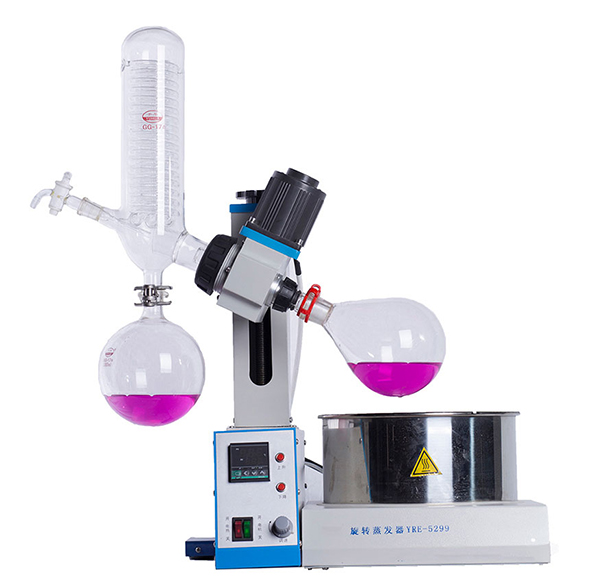How to Select a Pump for Rotary Evaporation
Evaporation is one of the most common tasks performed in a chemistry laboratory. But, how do you go about selecting the correct vacuum pump for your rotary evaporator? Or, if you already have a vacuum pump, how do you know whether it is well-suited for this application? The key to correctly selecting and sizing a vacuum pump for rotary evaporation can be found in your answers to the following four questions.

What solvents are you working with?
This topic naturally progresses to the need for chemical compatibility. Based on the solvent vapors going through the pump, one can determine the best materials for a long, trouble-free service life. Dry, oil-free pumps offer significant advantages in this area in comparison to rotary vane and water aspirators. In addition, they can feature premium, corrosion-resistant wetted parts, are easily maintained on site, and do not create hazardous waste.
What is the size of your evaporation flask?
This question allows you to select the best-sized pump for your application. Bigger isn’t always better. A pump that is too large or has too high of a flow capacity for a given application is difficult to control, terribly inefficient and more expensive to own and operate. On the other hand, a pump that’s sized too small or doesn’t have enough flow capacity will slow the evaporation and lead to longer processing times. A pump that is used for a 250-mL flask is probably not the best pump for use with a 20-L evaporation flask, and vice versa.
What is the temperature of your heating bath?
The goal is to determine whether or not the pump is able to provide the necessary vacuum level and handle the vapor temperatures. The closer the bath temperature is to the boiling point of the solvent, the faster the rate of evaporation. If the mixture is not sensitive to elevated temperatures, increasing the bath temperature will speed the process and reduce the need for a deep vacuum pump. This may have an effect on which pump is best for the job.
How do you want to control the vacuum?
Manual, two-point or adaptive control? Vacuum control allows for optimization of the vacuum level in the system. Optimum vacuum level shortens evaporation times and provides superior product yields. Control of the vacuum also reduces bumping and enables greater solvent recovery and repeatability.
Manual vacuum control involves the use of a stopcock or manual valve to adjust the vacuum level based on visual cues. Using this method, you will need to monitor throughout the process as the vacuum requirements may change during the evaporation.
Two point or on/off vacuum control allows the vacuum in the system to cycle between a high and low set point by turning the pump on and off. This method allows you to leave the process unattended once the min/max settings are determined.
Adaptive vacuum control provides the best results in terms of separation, speed and solvent recovery, and allows you to leave the process unattended once set. This type of control modifies the speed of the pump to precisely match the requirements of the process. It is the most accurate method; allowing for the system to operate at a specified vacuum level while responding to changing conditions without the need to monitor and adjust settings.
With answers to these four questions, you are now prepared to talk to your supplier about proper pump selection, or to evaluate the suitability of the pump you already have.
- High-tech Zone, Zhengzhou City, Henan Province, China.
- +86 132 9817 7608
- info@rotovap-wellknown.com
- li249869402
Copyright © Zhengzhou Well-known Instrument & Equipment Co.,Ltd. All Rights Reserved Sitemap










